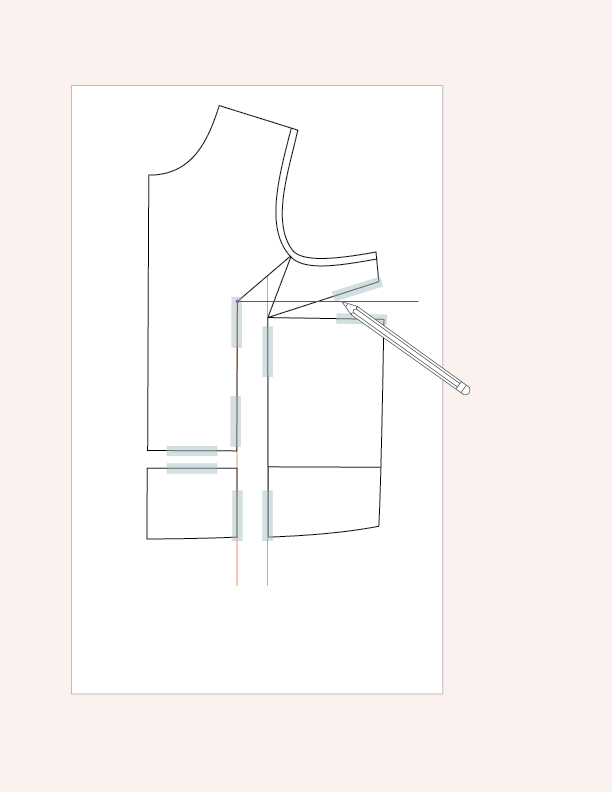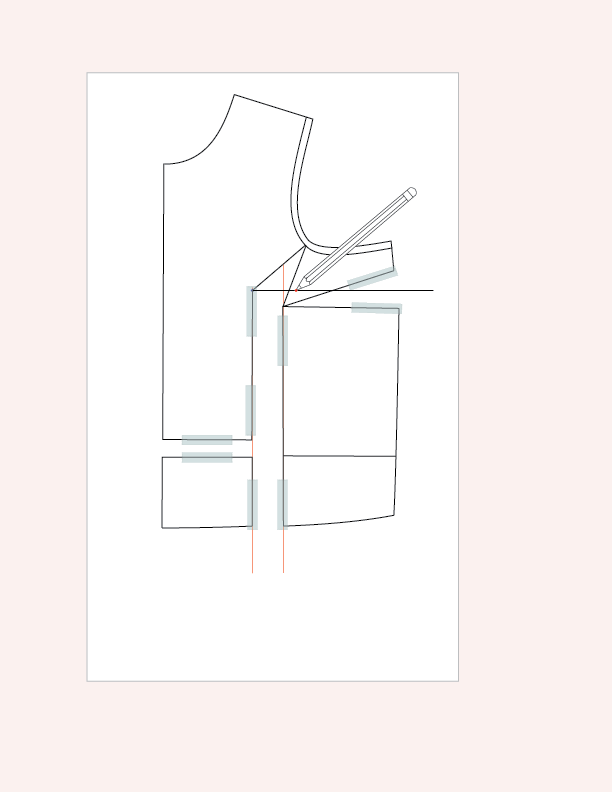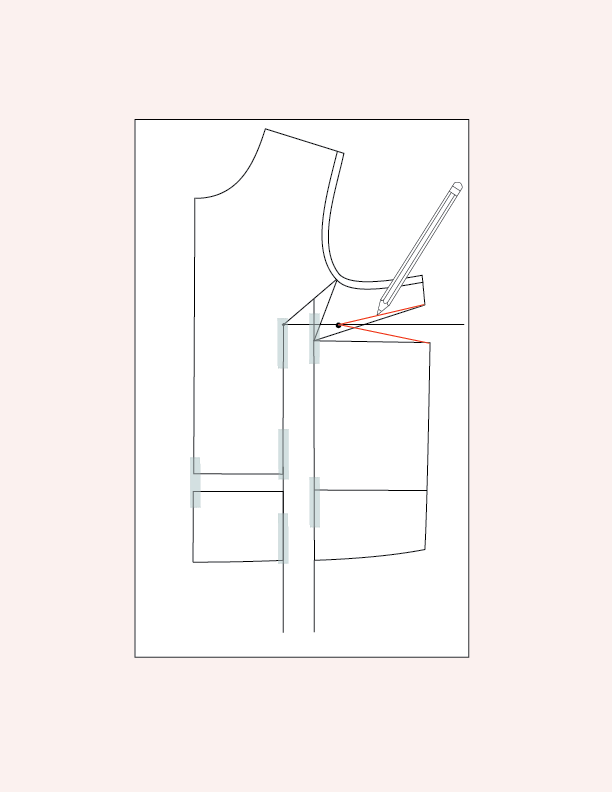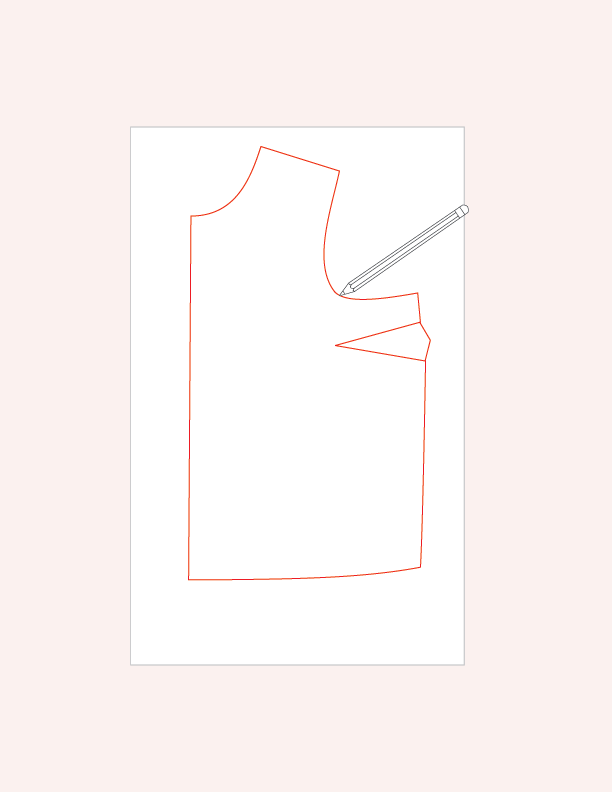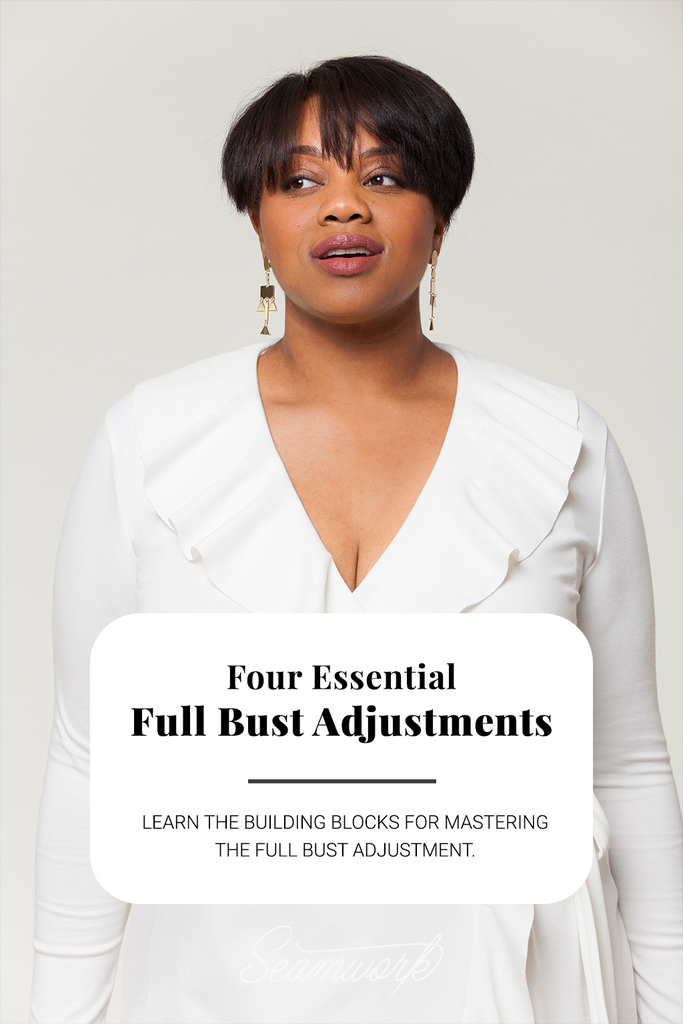Bust adjustments are a hot topic in the sewing world. And here at Seamwork, they are without a doubt one of the topics we receive the most questions on. If you are large busted a full bust adjustment (commonly referred to as an FBA) will help you to achieve more room in the bust without compromising shoulder fit and in the case of sleeveless garments armscye coverage.
It can feel a little overwhelming to think about all of the possibilities when it comes to FBAs, but I find that four common types of FBAs can be adapted to fit a wide variety of patterns. In this article, I will go over how to execute an FBA on garments with no bust darts, with bust darts, with a four-dart design, and with princess seams.
Before jumping into how to execute a full bust adjustment, you'll want to learn how to measure your bust and determine your sewing cup size.
Taking your bust measurement
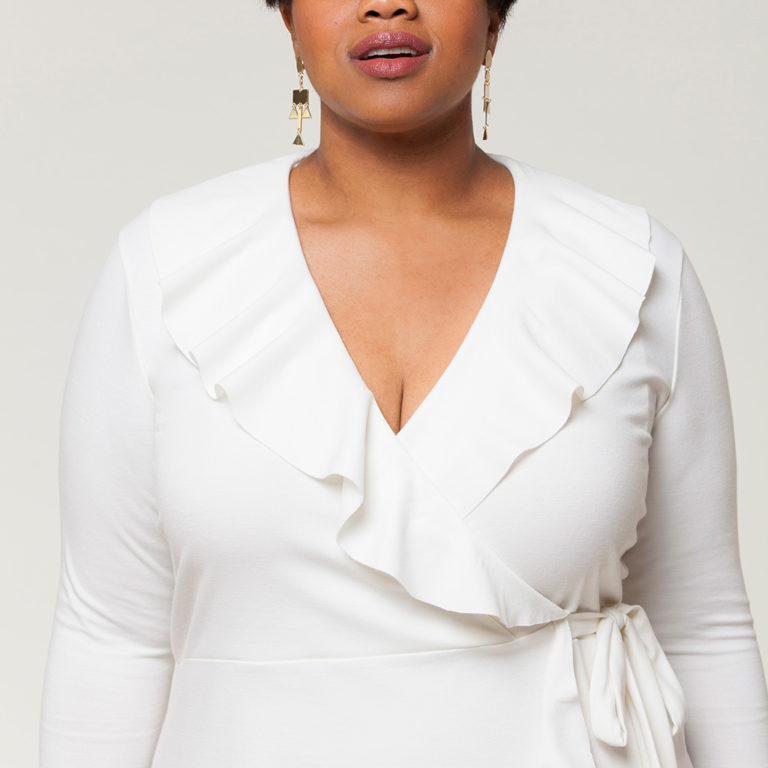
There are two vital measurements used to determine your sewing cup size: full bust and upper bust. Your full bust is the fullest part of your bust. When taking this measurement, your tape measure should be parallel to the floor, standing in front of a mirror can help ensure this. The upper bust is the area of your chest right below your underarms.
What is my sewing cup size?
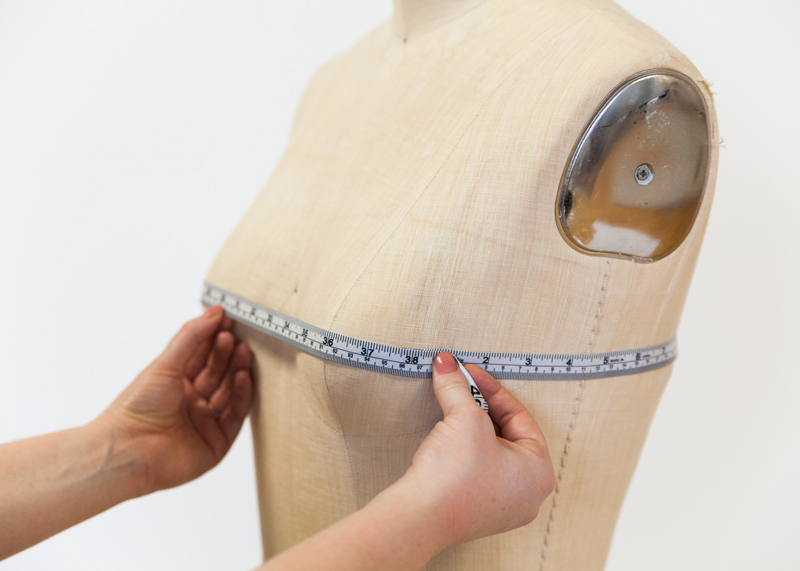
Measure your full bust.
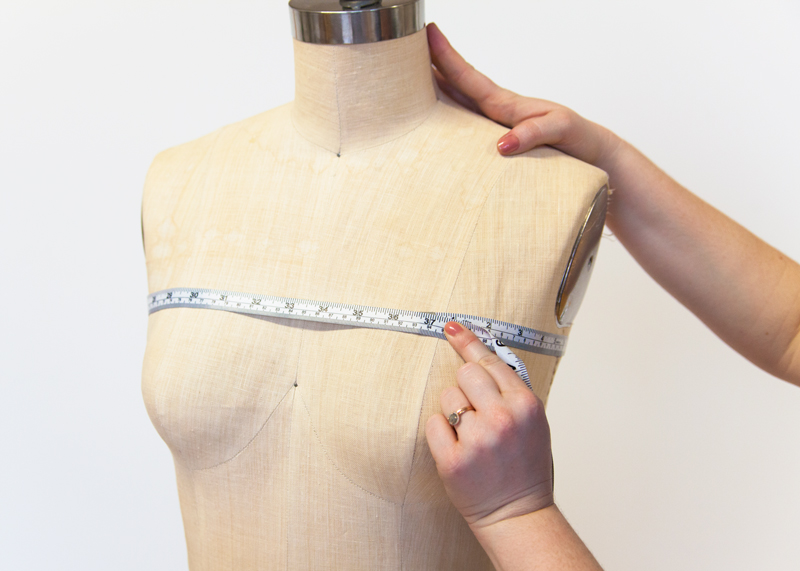
Measure your upper bust. The difference between your upper and full bust is your cup size. A cup is 1", B cup is 2", C cup is 3", DD is 5", etc.
What size should I cut?
Now that you know your sewing cup size, it is time to determine what size to start with.
When you require an FBA or SBA, picking a size isn't always as straightforward. Here is how to find your size:
If you are in the 0-16 size range, take your upper bust measurement, then add 3″. This will determine what size you would make if you were a C cup.
If you are in the 18-26 size range, add 5" to your upper bust measurement. This will determine what size you would make if you were a DD cup.
The difference between your actual bust measurement and the size you are cutting is the amount your pattern will need to be adjusted. This is your bust differential measurement.
I know this all can be a bit confusing, so here is an example:
Your upper bust measures at 33″ and your full bust measures at 38″.
33 + 3 = 36. This means you would cut a size 6.
38 (your actual bust measurement) – 36 (the pattern bust measurement) = 2 (your bust differential)
Meaning, you would add 2″ to your size 6 pattern with an FBA.
Full Bust Adjustments for Bodices without Darts
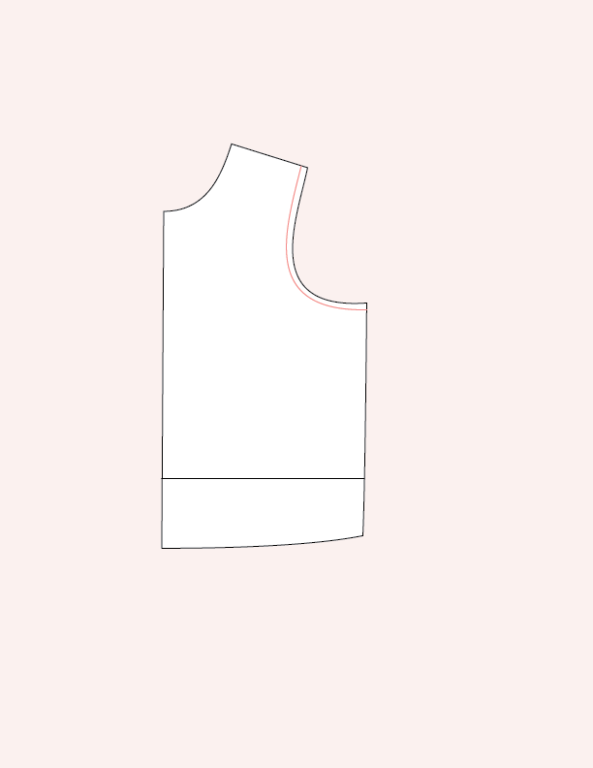
Prepare your pattern by tracing the front bodice, transferring all notches, and markings. Also, mark the stitch line at the armscye.
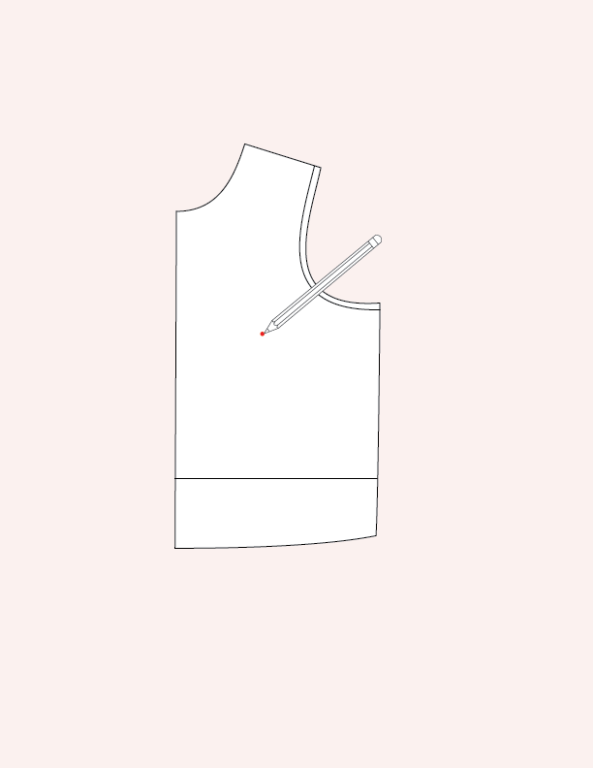
Hold the pattern up to your body, aligning the shoulder seam with your shoulder and the center front with the center of your body. Mark your bust point on the pattern piece using a pencil.
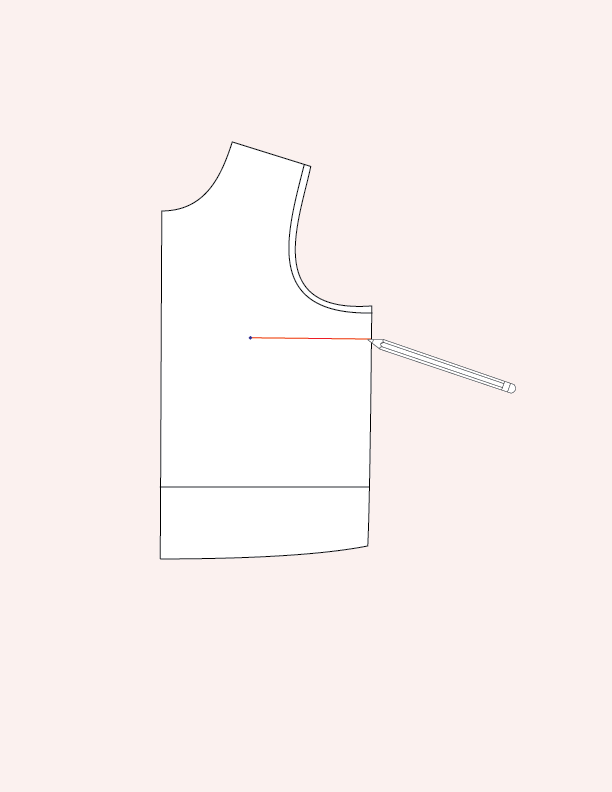
Draw a line from the bust point to the side seam, perpendicular to the grainline. This is line A.
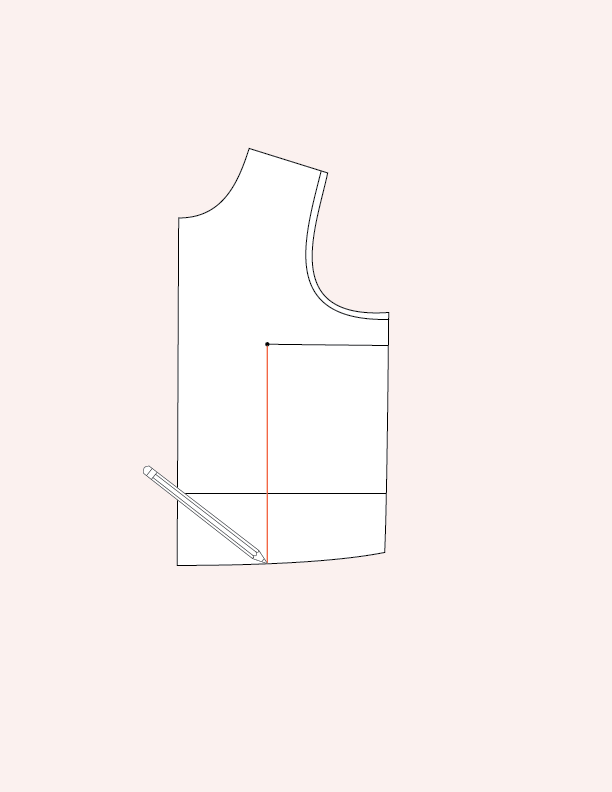
Draw a line from the bust point to the hem, parallel to the grainline. This is line B.
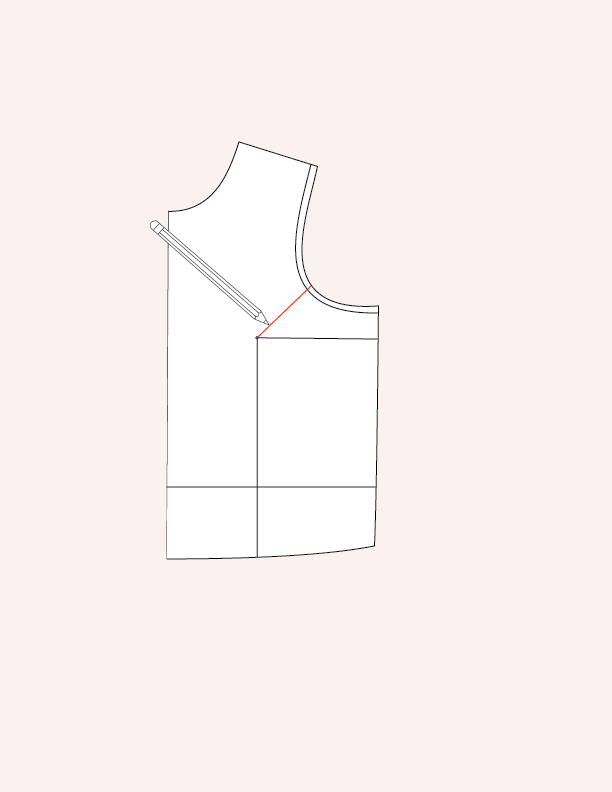
Draw a third line from the bust point through the armscye. This is line C.
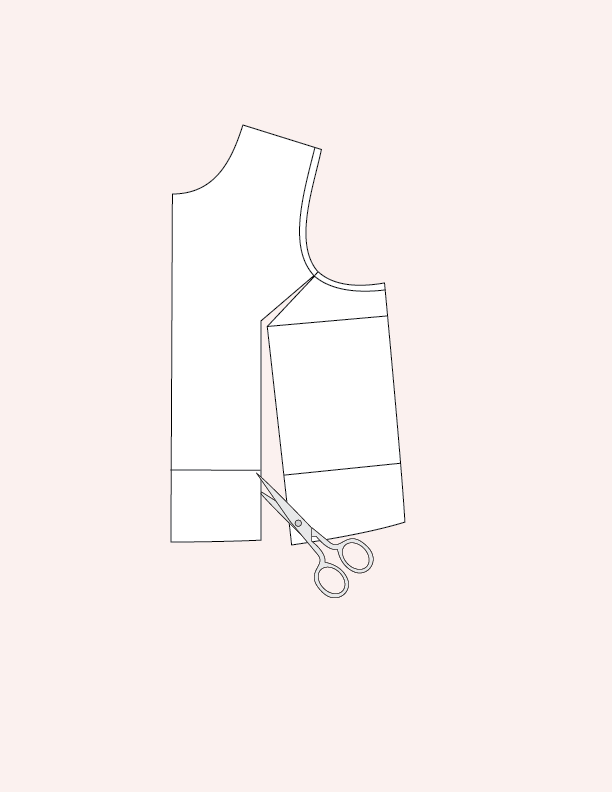
Using your paper shears, cut through line B, starting at the hem. Pivot at the bust point and continue cutting through line C, stopping at the armscye sewing line. Cut a small notch through the seam allowance at line C, leaving a small paper hinge at the sewing line.
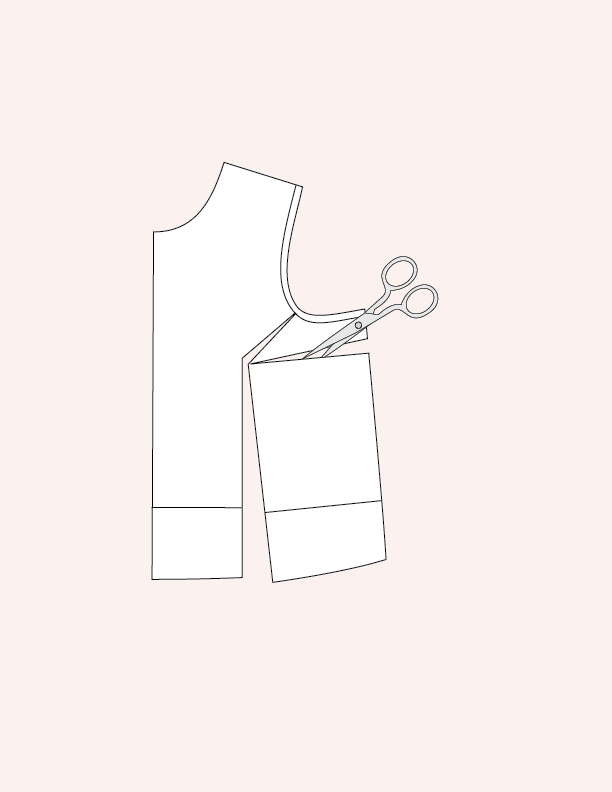
Next, cut through line A, starting at the side seam, leaving a small paper hinge at the bust point.
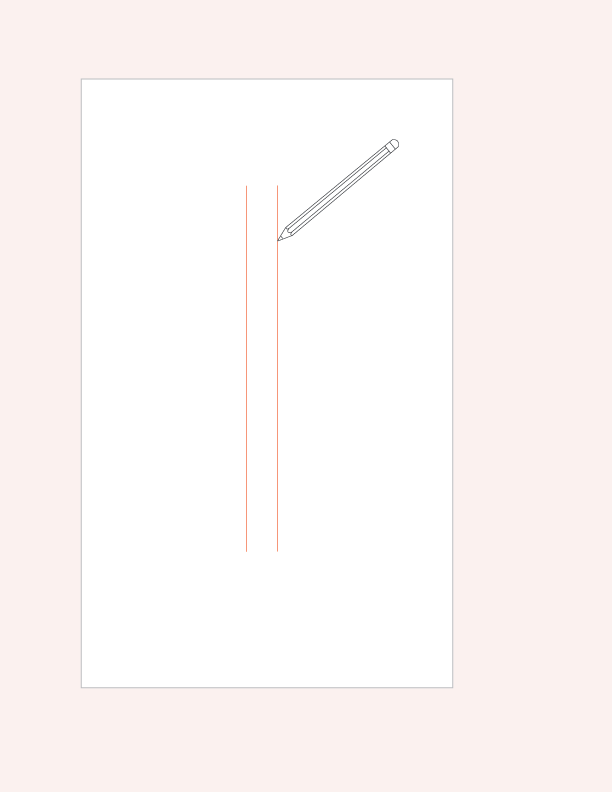
Divide your bust differential by 2. This is the amount that you will add to your pattern piece. On your piece of pattern paper, draw two parallel lines that are that distance apart.
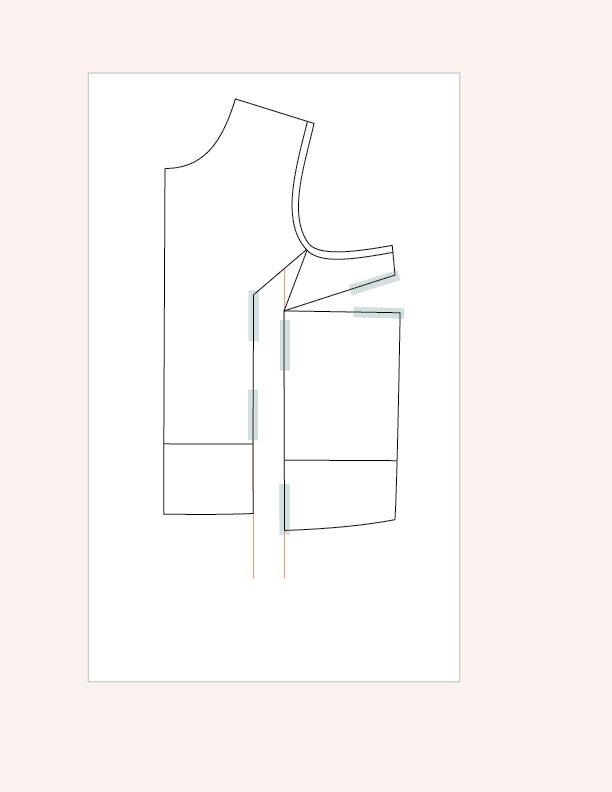
Lay your slashed pattern on top of the pattern paper. The hinge that you created at the side should allow you to maneuver your B lines so that they lay on your parallel guidelines. Carefully tape your pattern to your pattern paper, leaving the center front portion free below the lengthen/shorten line.
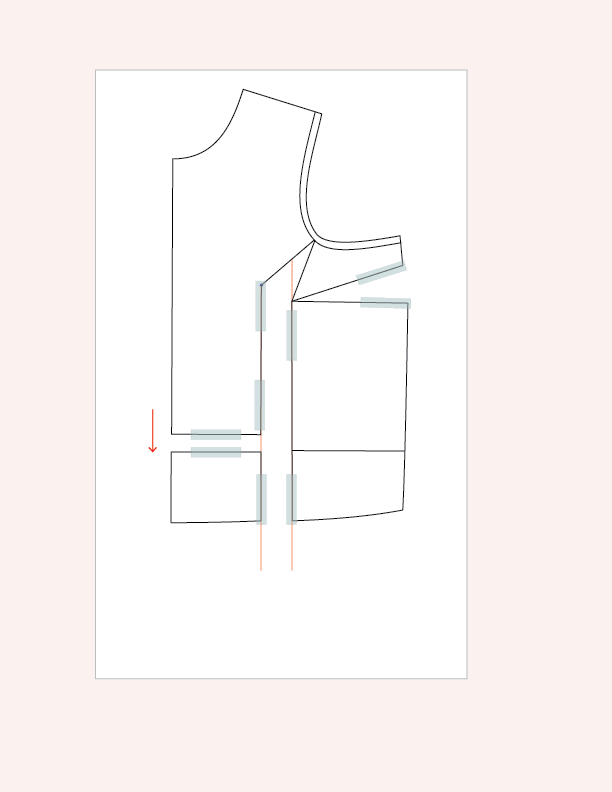
You will notice that the hem of your pattern is now two different lengths. A full bust requires additional length. Use the lengthen/shorten line on the center front to lengthen the center front so that the hem aligns with the side front.
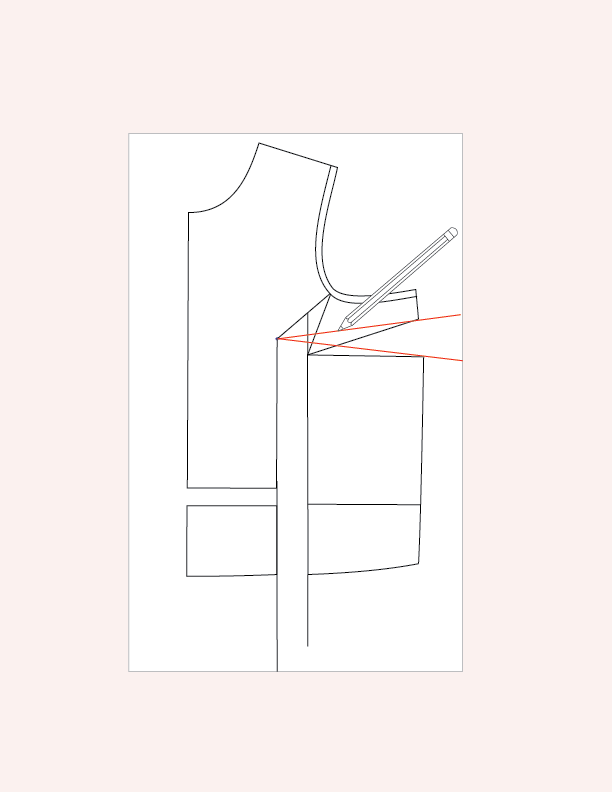
To eliminate the dart, draw two lines from the side seam opening to the bust point.
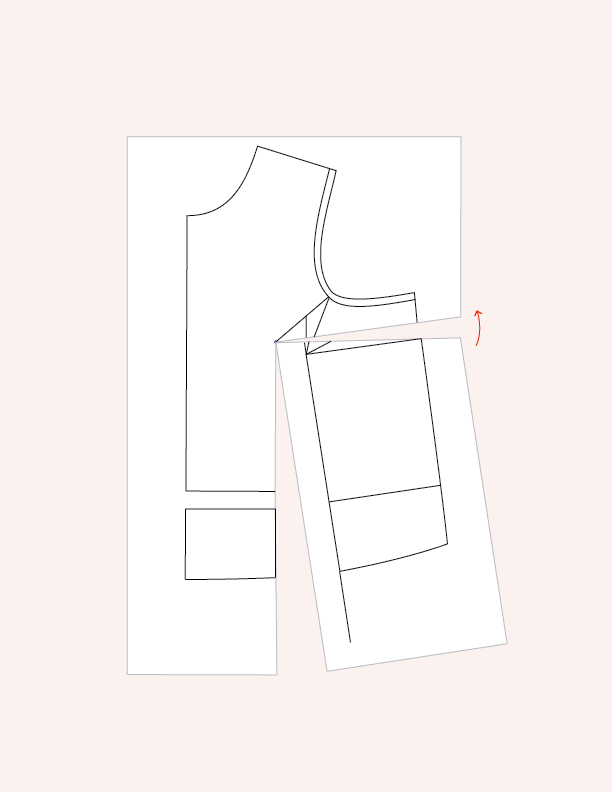
Cut along the drawn lines, removing a wedge of paper. Then cut along line B from the hem to the bust point. Carefully pivot the lower side edge of the pattern, closing the opening created.
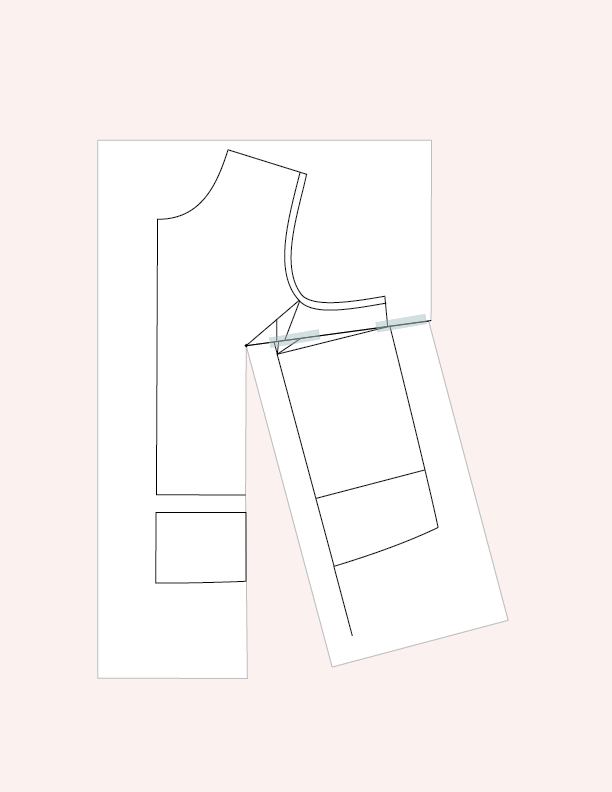
Tape along the closed wedge.
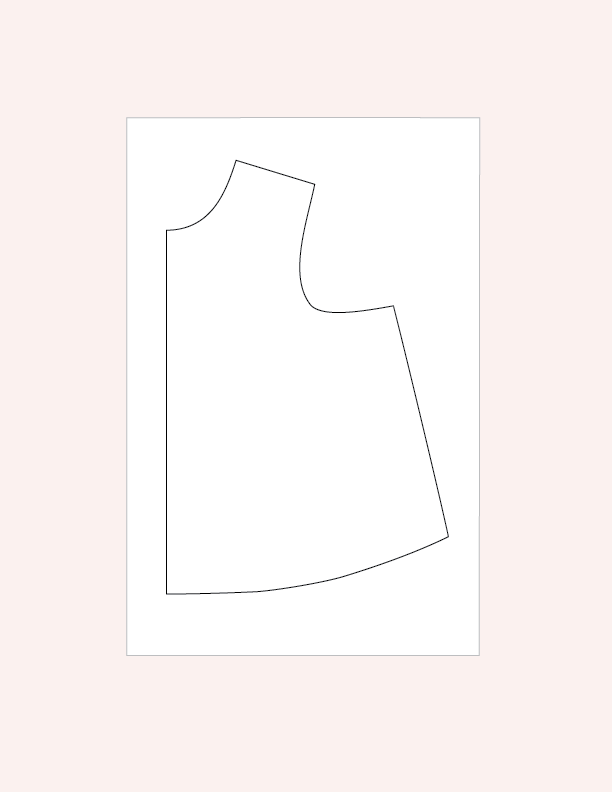
Trace the altered front bodice.
No additional adjustments need to be made to the rest of the pattern, as only the dart uptake and the center front length have changed.
Full Bust Adjustments for Bodices with Bust Darts
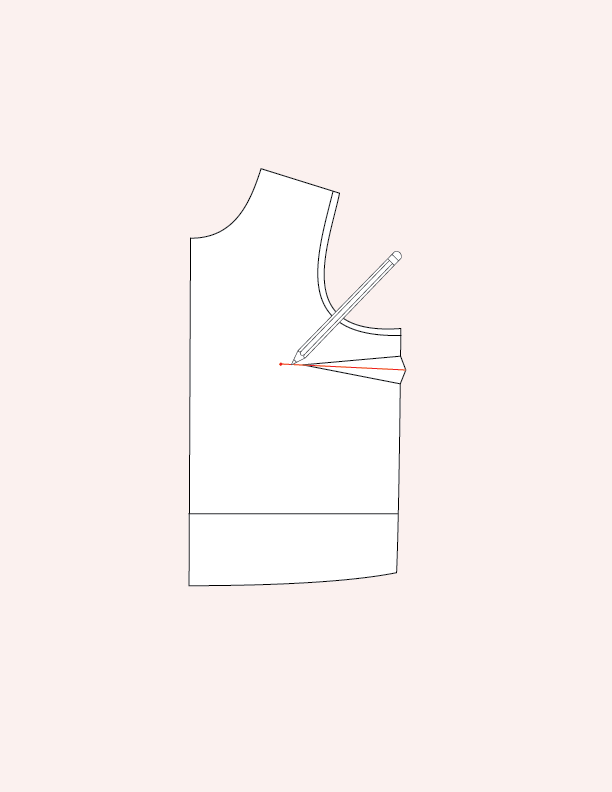
Prepare your pattern by tracing the front bodice, transferring all darts, notches, and markings. Also, mark the stitch line at the armscye.

Draw a line through the center of the bust dart, extending through the dart point to the bust point (2″ beyond the dart apex). This is line A.
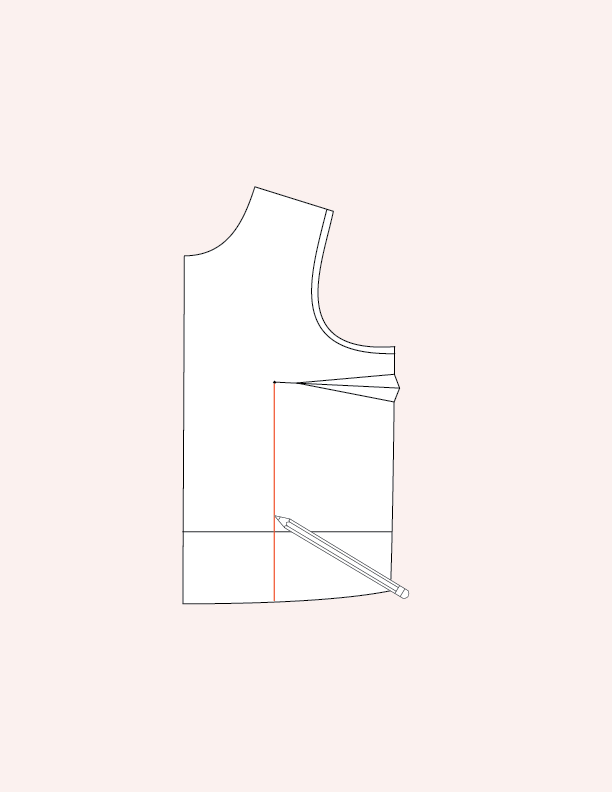
Draw a line from the bust point to the hem, parallel to the grainline. This is line B.
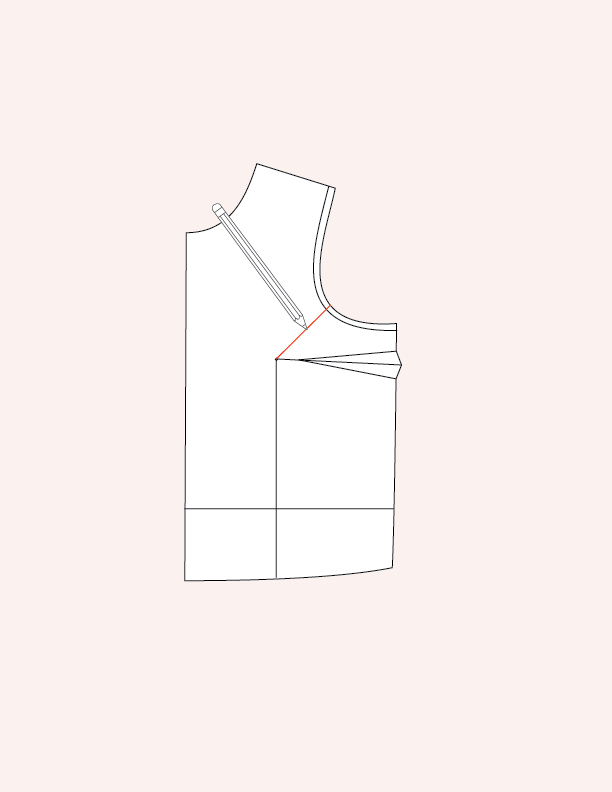
Draw a third line from the bust point through the armscye. This is line C.
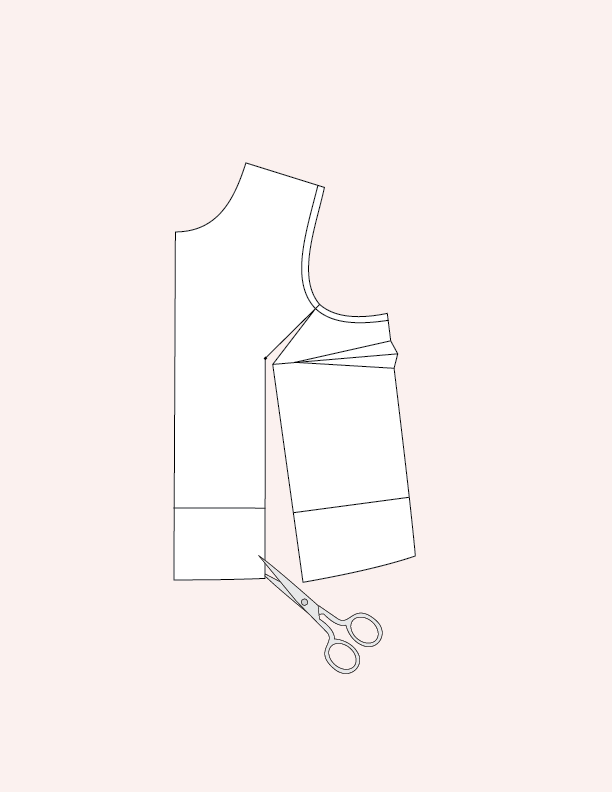
Using your paper shears, cut through line B, starting at the hem. Pivot at the bust point and continue cutting through line C, stopping at the armscye stitch line. Cut a notch through the seam allowance at line C, leaving a small paper hinge at the stitch line.
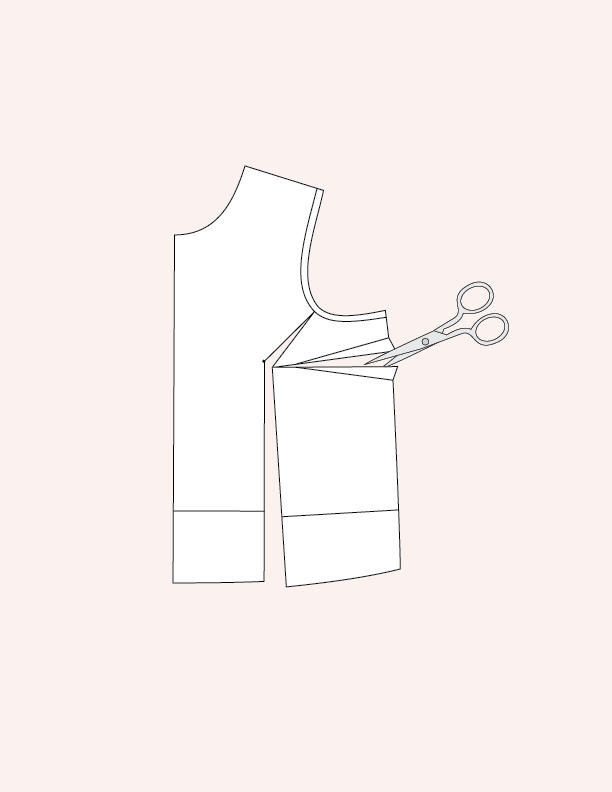
Next, cut through line A, starting at the side seam, leaving a small paper hinge at the bust point.
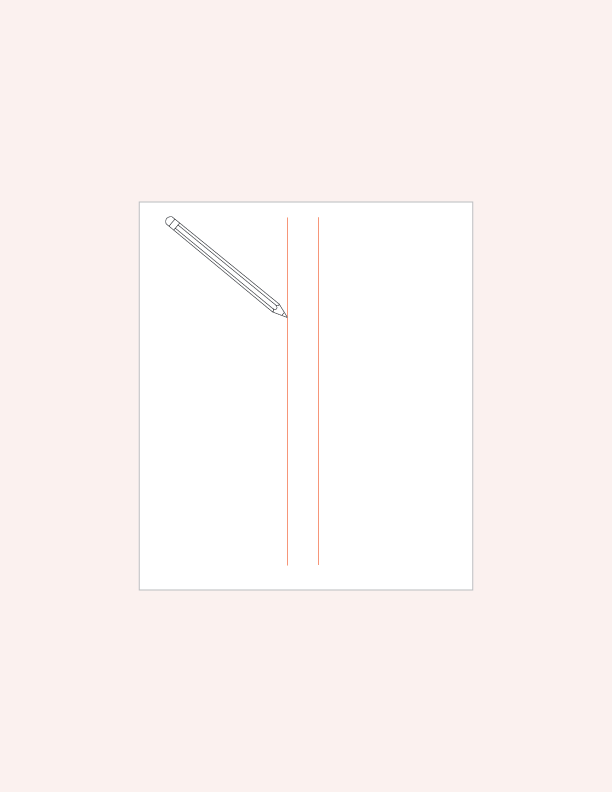
Divide your bust differential by 2. This is the amount that you will add to your pattern piece. On a piece of pattern paper, draw two parallel lines that are that distance apart.
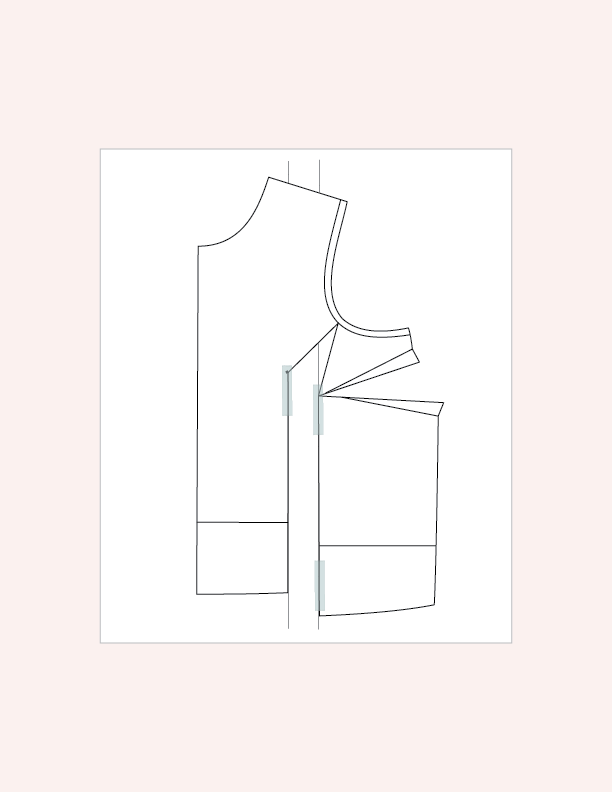
Lay your slashed pattern on top of the pattern paper. The hinge that you created at the side dart should allow you to maneuver your B lines so that they lay on your parallel guidelines. Carefully tape your pattern to your pattern paper, leaving the center front portion free below the lengthen/shorten line.
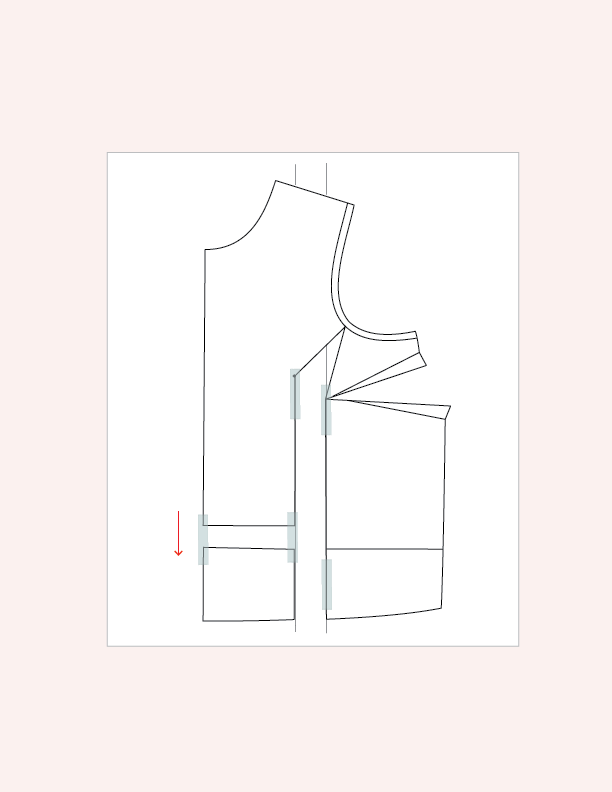
You will notice that the hem of your pattern is now two different lengths. A full bust requires additional length. Use the lengthen/shorten line at the center front to lengthen the center front so that the hem aligns with the side front.

Draw a line through the center of the dart toward the apex.
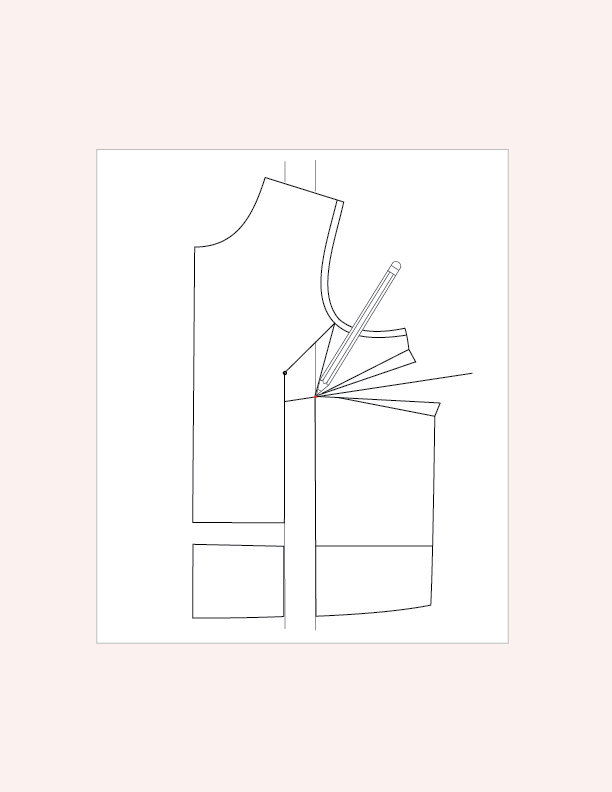
Make a mark along the line 2” from the apex. This is your dart tip.
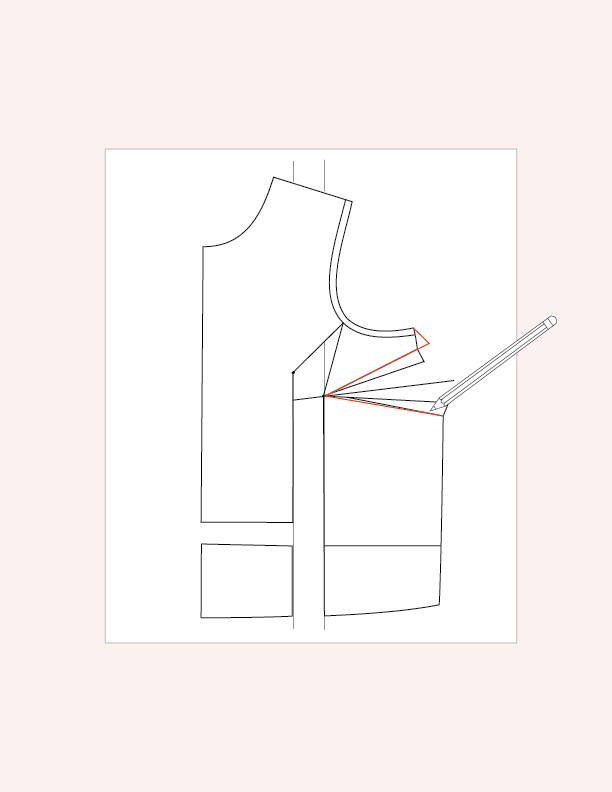
Using a ruler, connect your dart tip to the existing dart ends. You will have to extend the upper dart leg so that the length matches the lower dart leg.
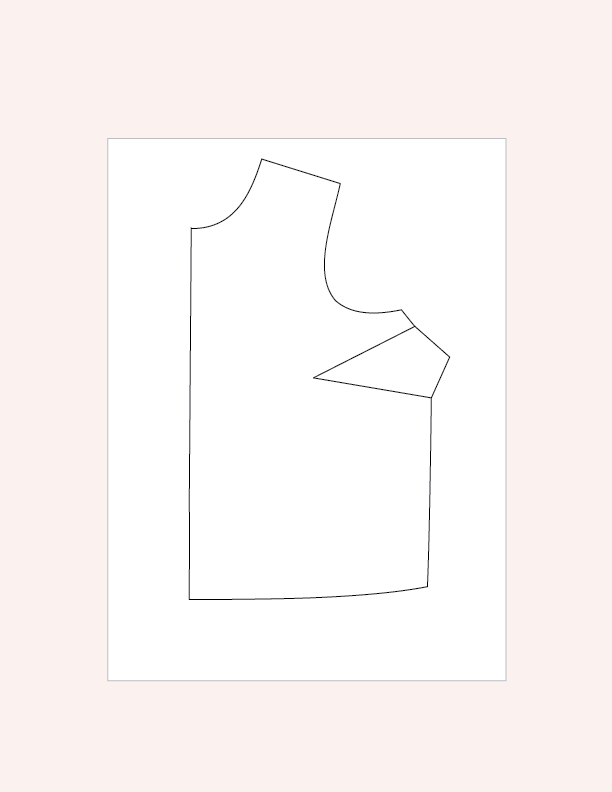
Trace the altered front bodice.
No additional adjustments need to be made to the rest of the pattern, as only the dart uptake and the center front length have changed.
Full Bust Adjustment for Bodices with Bust and Waist Darts
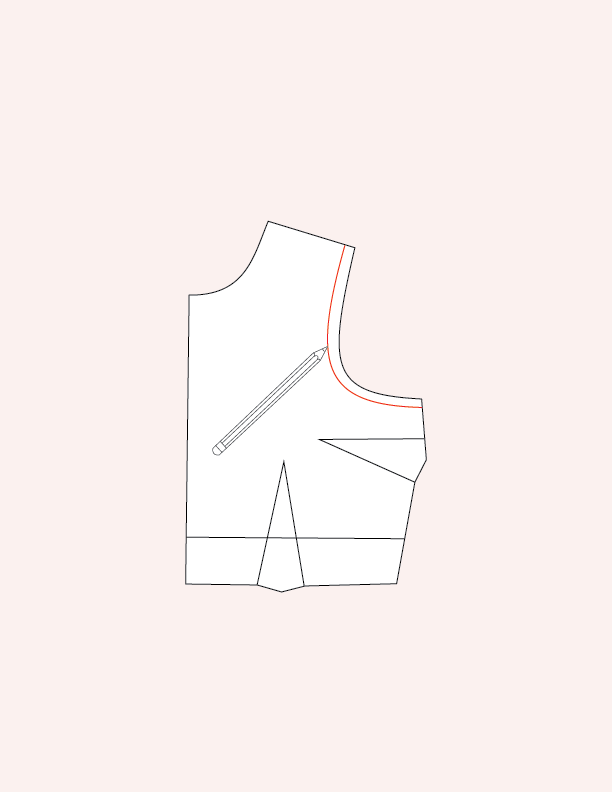
Prepare your pattern by tracing the front bodice, transferring all darts, notches, and markings. Also, mark the stitch line at the armscye.
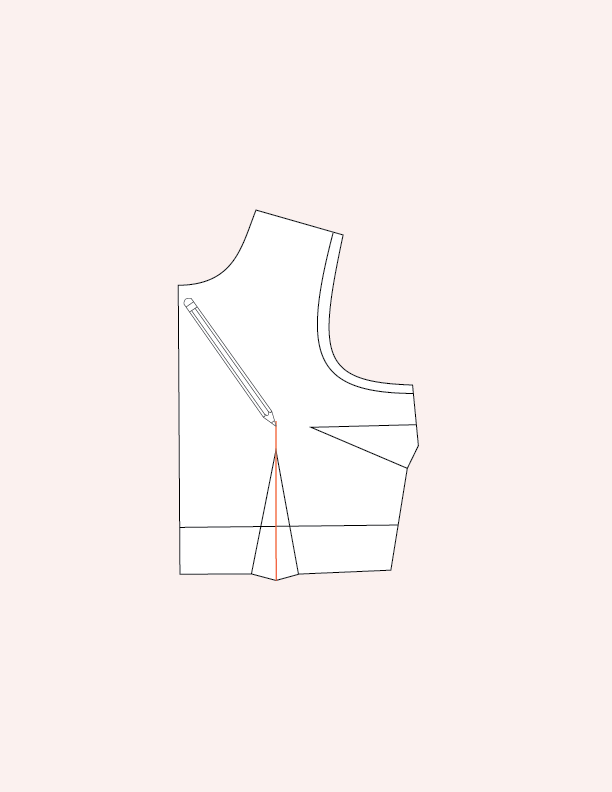
Draw a line through the center of the waist dart, extending through the dart point up toward the bust point. This is line A.
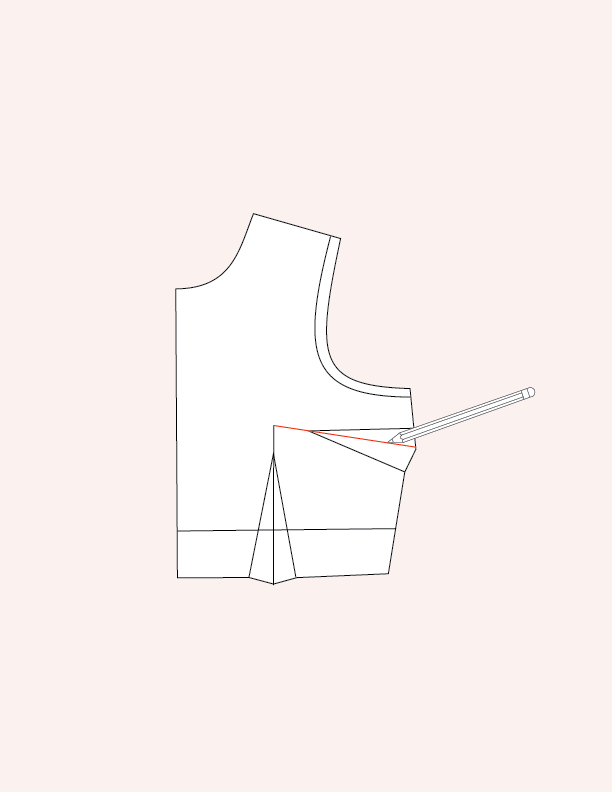
Draw a second line through the center of the bust dart, extending through the dart point up toward the bust point. This is line B. The intersection of line A and B is the bust apex.
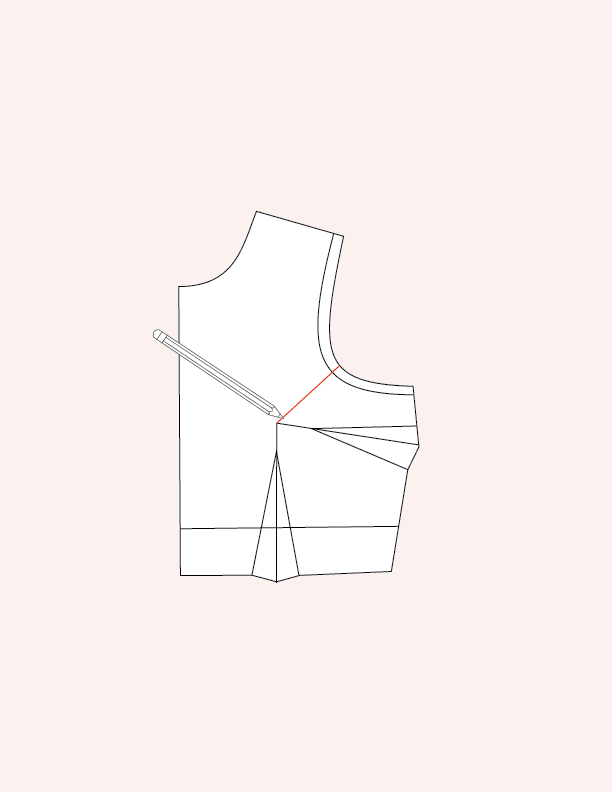
Draw a third line from the armhole to the bust apex. This is line C.
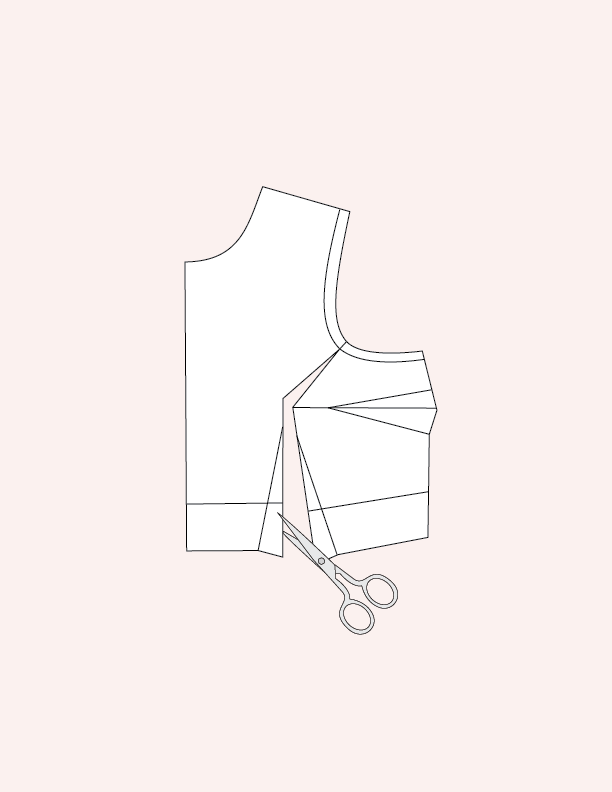
Using your paper shears, cut through line A, starting at the waist. Pivot at the bust point and continue cutting through line C, stopping at the armscye sewing line. Cut a notch through the seam allowance at line C, leaving a small paper hinge at the stitch line.
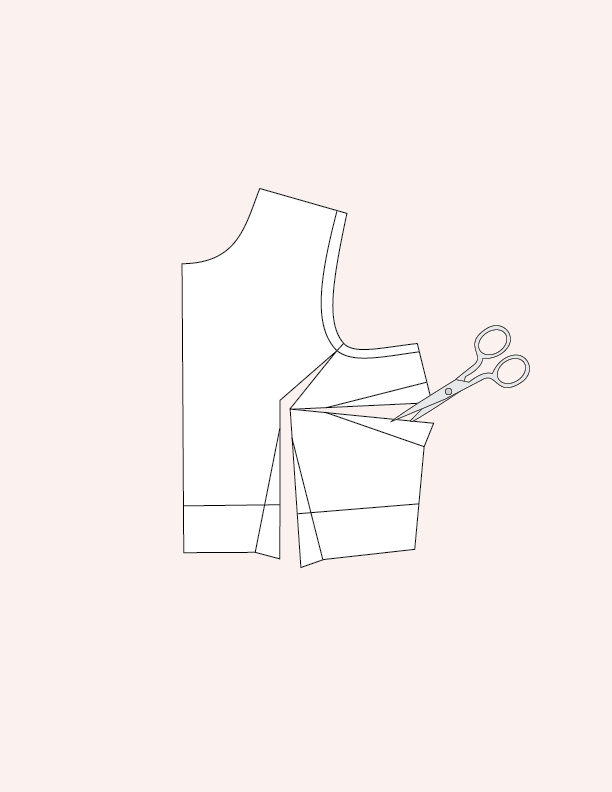
Next, cut through line B, starting at the side seam, leaving a small paper hinge at the bust point.
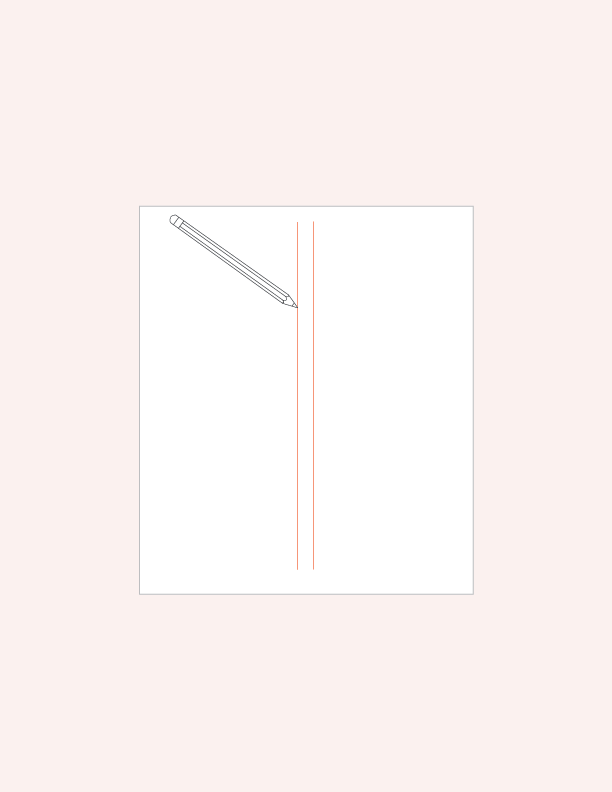
Divide your bust differential by 2. This is the amount that you will add to your pattern piece. On a piece of pattern paper, draw two parallel lines that are that distance apart.
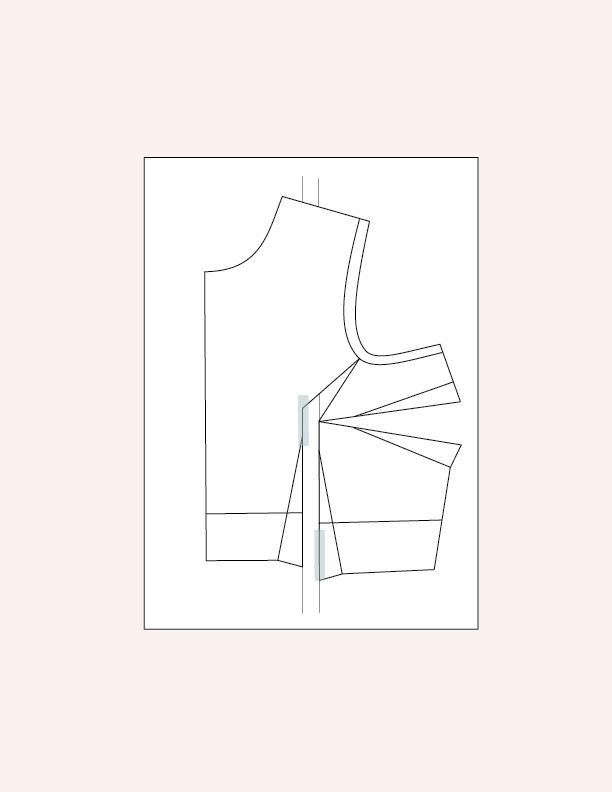
Very carefully lay your slashed pattern on top of the pattern paper. The hinge that you created at the side dart should allow you to maneuver the A lines so that they lay on your parallel guidelines. Carefully tape your pattern to your pattern paper, leaving the center front portion free below the lengthen/shorten line.

You will notice that the waist of your pattern is now two different lengths. A full bust requires additional length. Use the lengthen/shorten line on the center front to lengthen the center front so that the waist aligns with the side front.
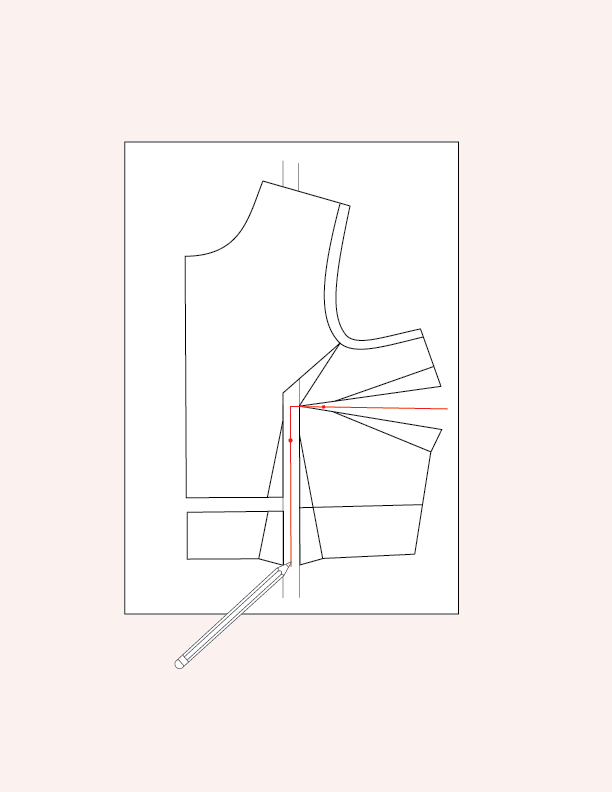
Draw a line through the center of each dart. The apex is where the two lines intersect. Make a mark 2" away from the bust point on each drawn line. These are your new dart points.
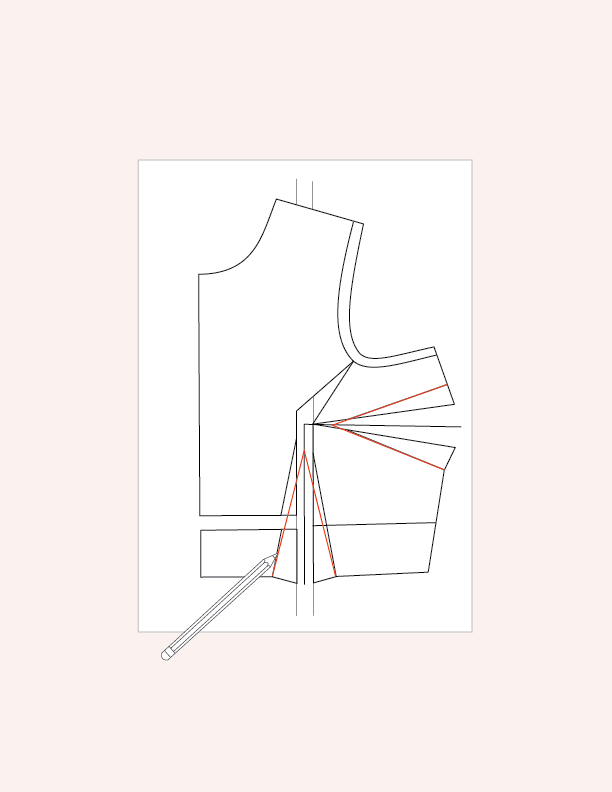
Connect each dart point to its corresponding dart ends.
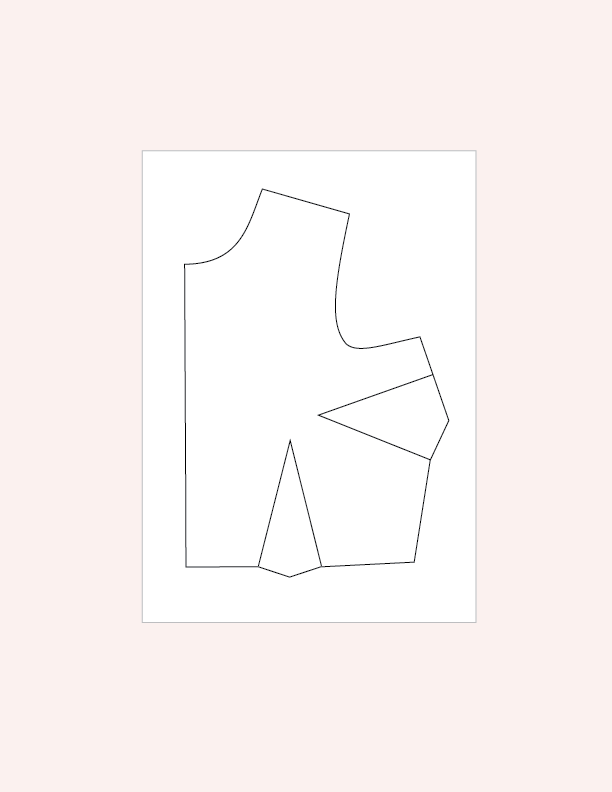
Trace and true the altered front bodice.
Full Bust Adjustment for Bodices with Princess Seams
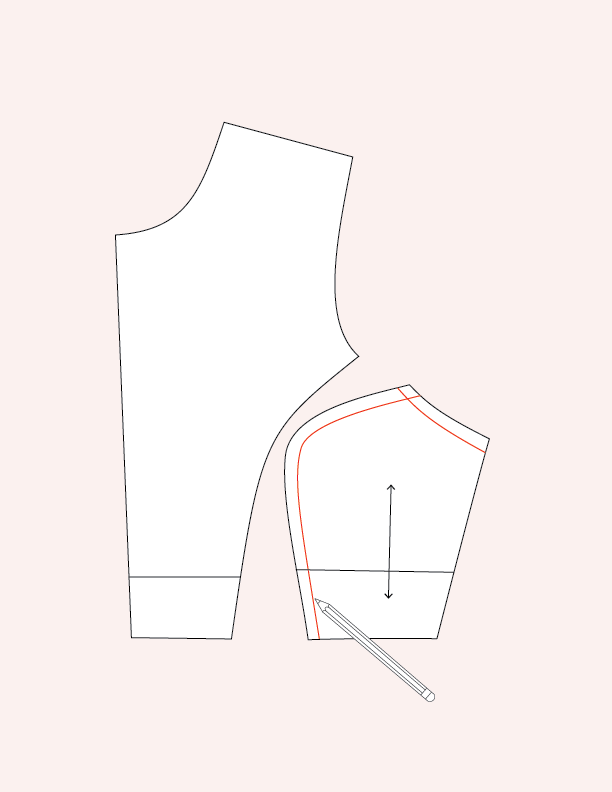
Prepare your pattern by tracing the front bodice, transferring all notches and markings. Also, mark the sewing line at the armscye and princess seam on the side bodice piece.
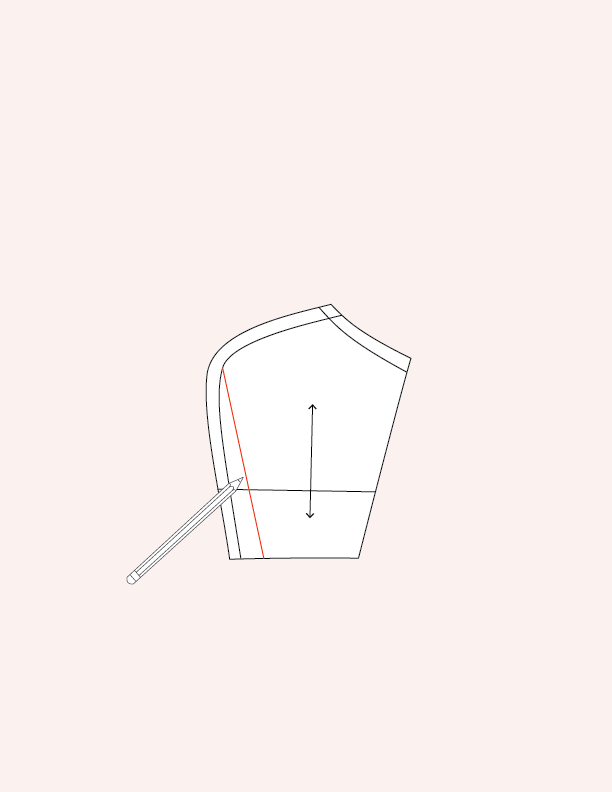
On the front side bodice piece, draw a line from the bust apex to the waist. This is line A.
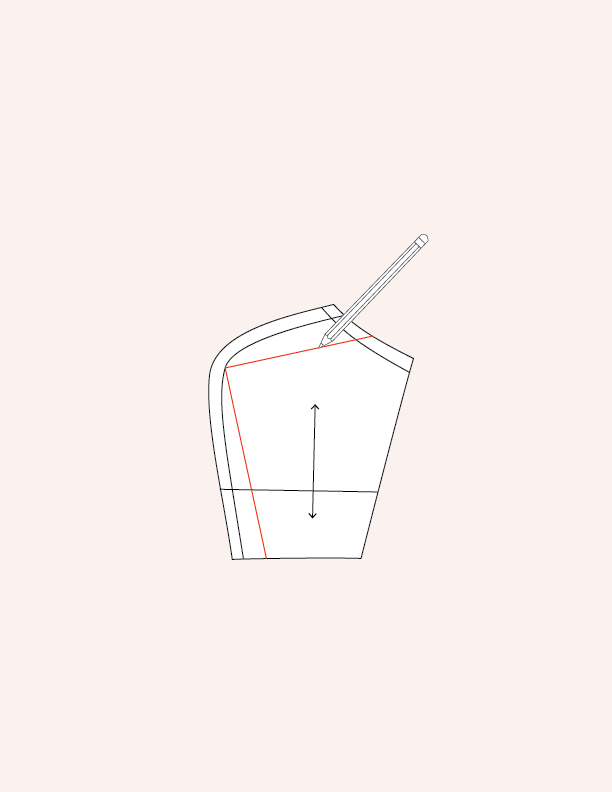
Draw a second line from the apex to the armhole. This is line B.
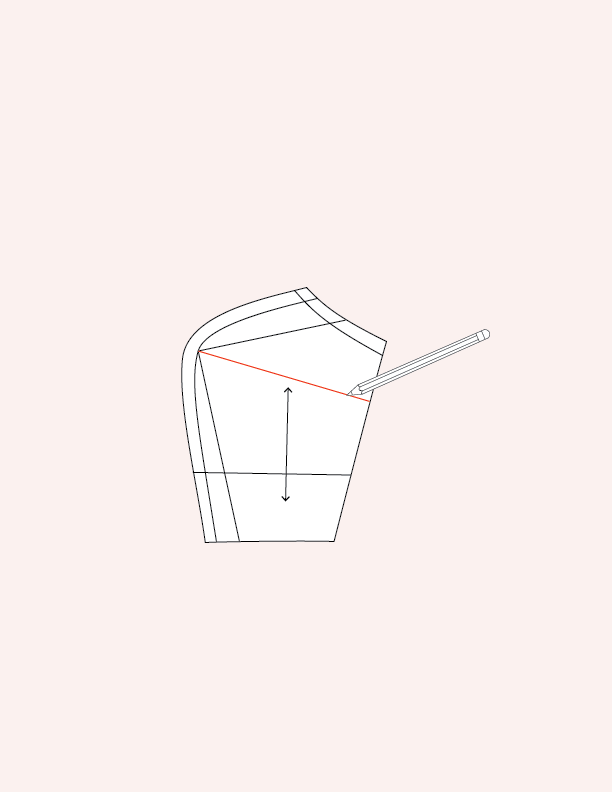
Draw a third line from the apex to the side seam. This is line C.
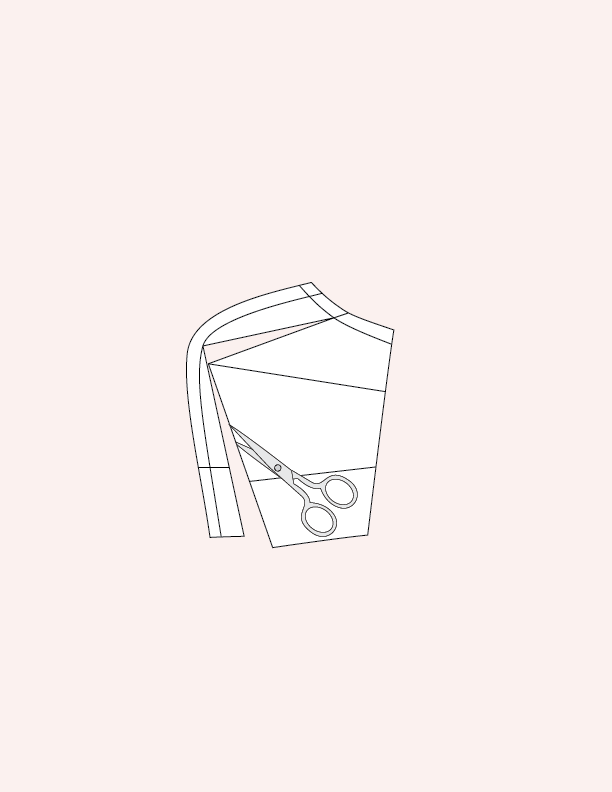
Using your paper shears, cut through line A, starting at the hem. Pivot at the bust point and continue cutting through line B, stopping at the armscye sewing line. Cut a notch through the seam allowance at line B, leaving a small paper hinge at the sewing line.
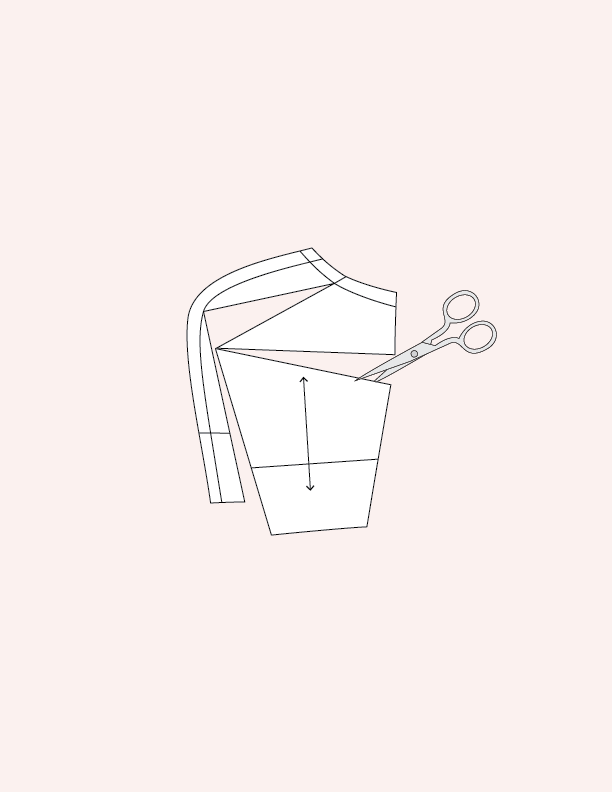
Next, cut through line C, starting at the side seam, leaving a small paper hinge at the bust point.
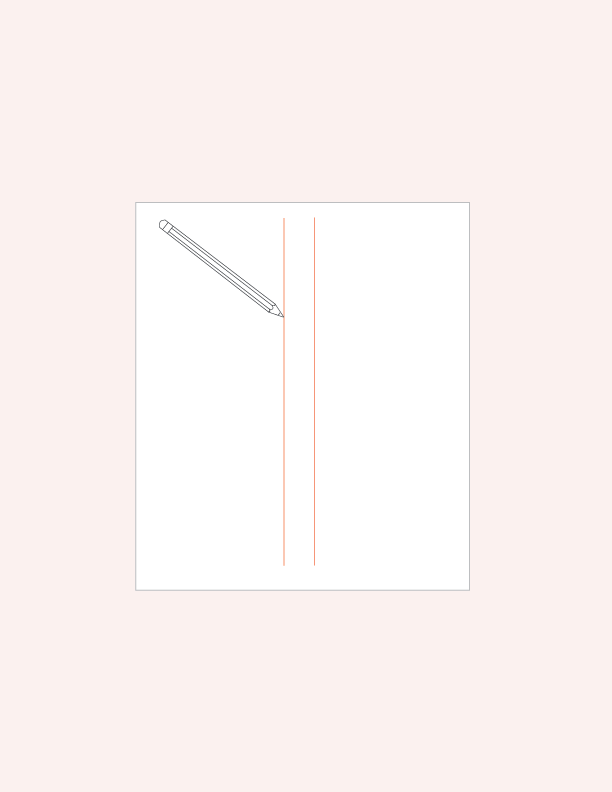
Divide your bust differential by 2. This is the amount that you will add to your pattern piece. On a piece of pattern paper, draw two parallel lines that are that distance apart.
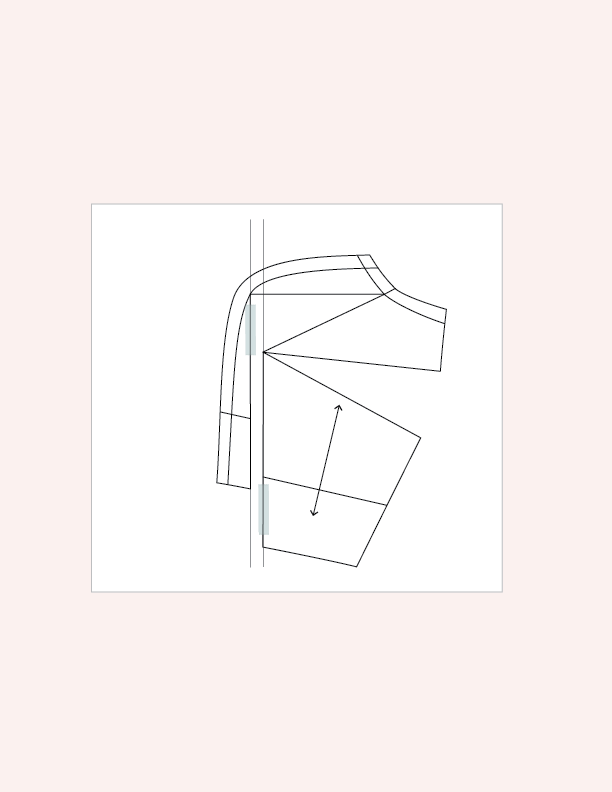
Very carefully lay your slashed pattern on top of the pattern paper. The hinge that you created at the side seam should allow you to maneuver the A lines so that they lay on your parallel guidelines. Carefully tape down your pattern to your pattern paper.
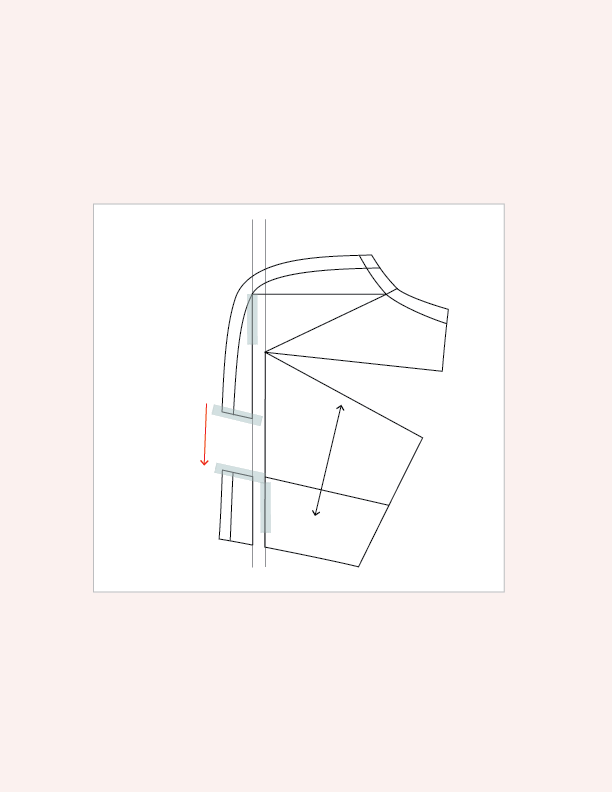
You will notice that the waist of your pattern is now two different lengths. A full bust requires additional length. Use the lengthen/shorten line on the portion of the bodice that is nearest the princess seam so that the waist aligns with the side front.
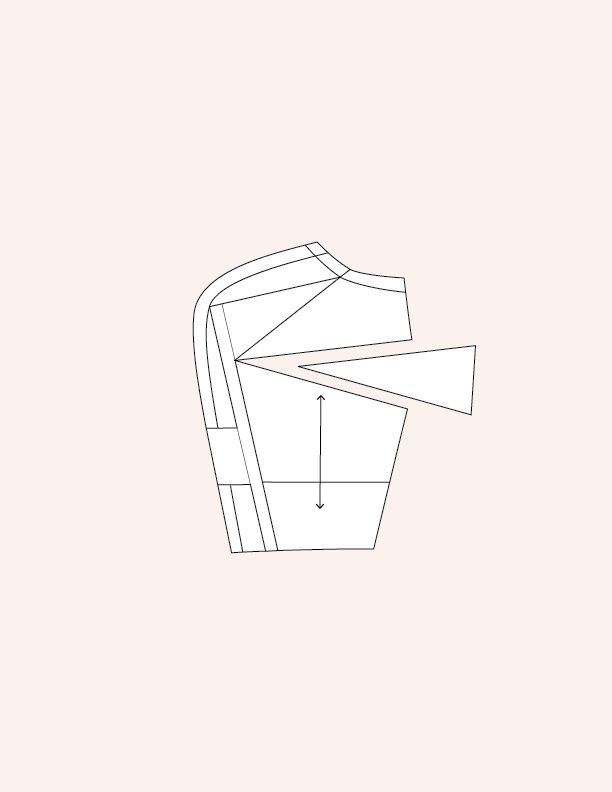
Using paper shears, cut away the "dart" at the side seam, created by opening your pattern.
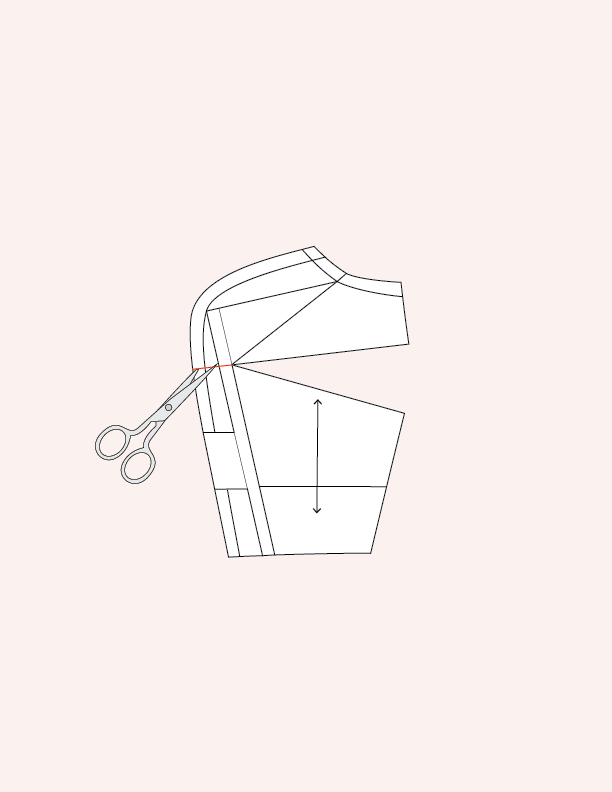
Starting at the princess seam, cut along the extended portion of line C, stopping at the intersection of lines A and B, and leaving a small paper hinge.
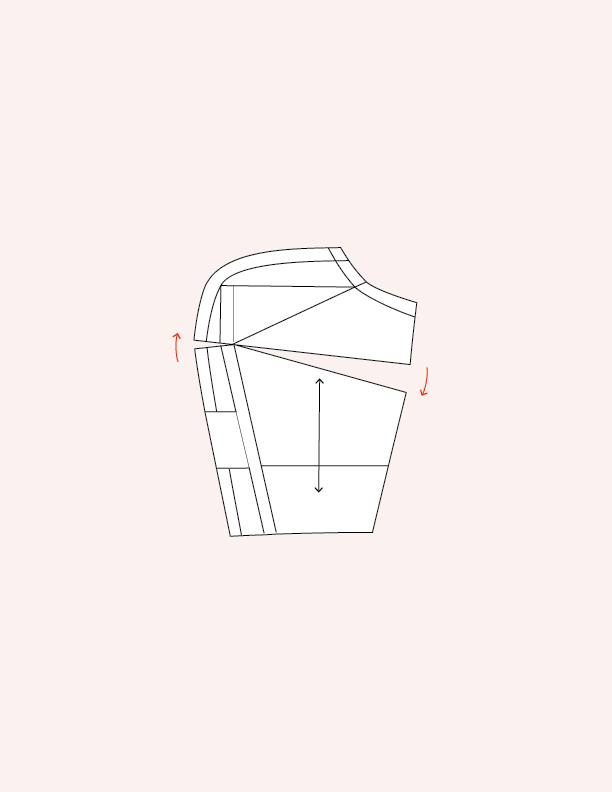
Close the "dart" at the side seam, creating an opening the princess seam.
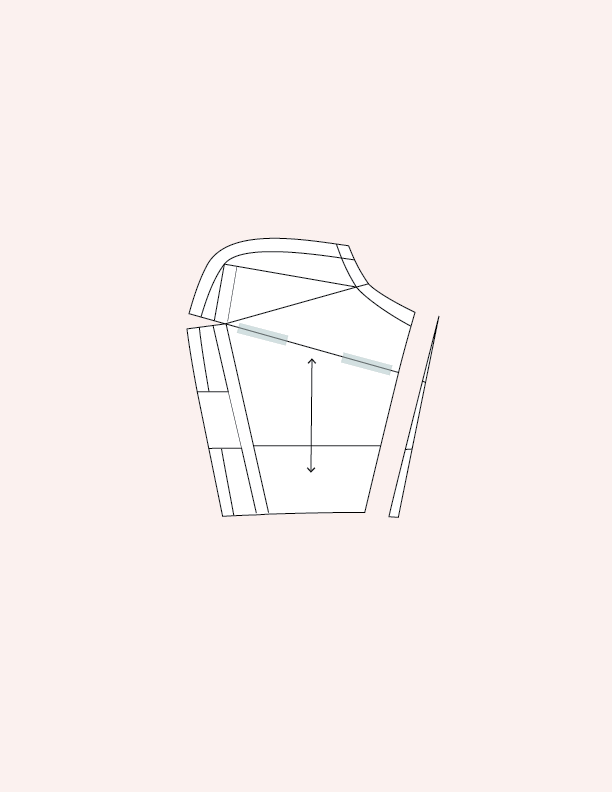
Reduce at the side seam by the same amount added to the bust to maintain the original waist measurement.
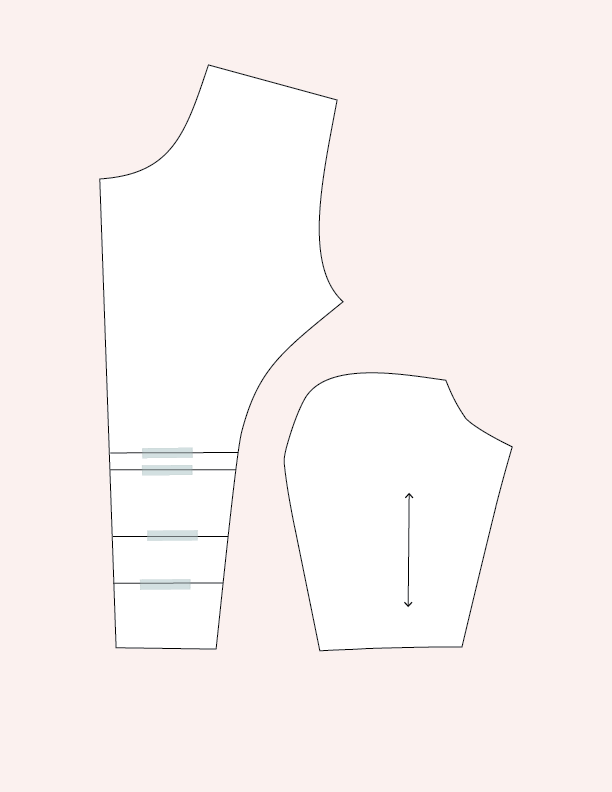
Add length to the center front bodice to be consistent with what was added to the side front bodice. Draw two lines perpendicular to the grainline, at the same level that you added length to your front side bodice. Cut along these lines and add the length needed. Trace the altered pattern pieces.
No additional adjustments need to be made to the rest of the pattern.
And don't forget, if you want to learn more about fitting, you can take my How to Fit with Confidence class! This is a class for Seamwork members, and you can join with half off a Seamwork Unlimited membership to get access to all of our classes, 200+ sewing patterns, and our private community for support, for just $90 a year.
It's a great deal, but the best part is the community support that you can get. Our community is always ready to jump in and help you with your tricky fit issues and more.
